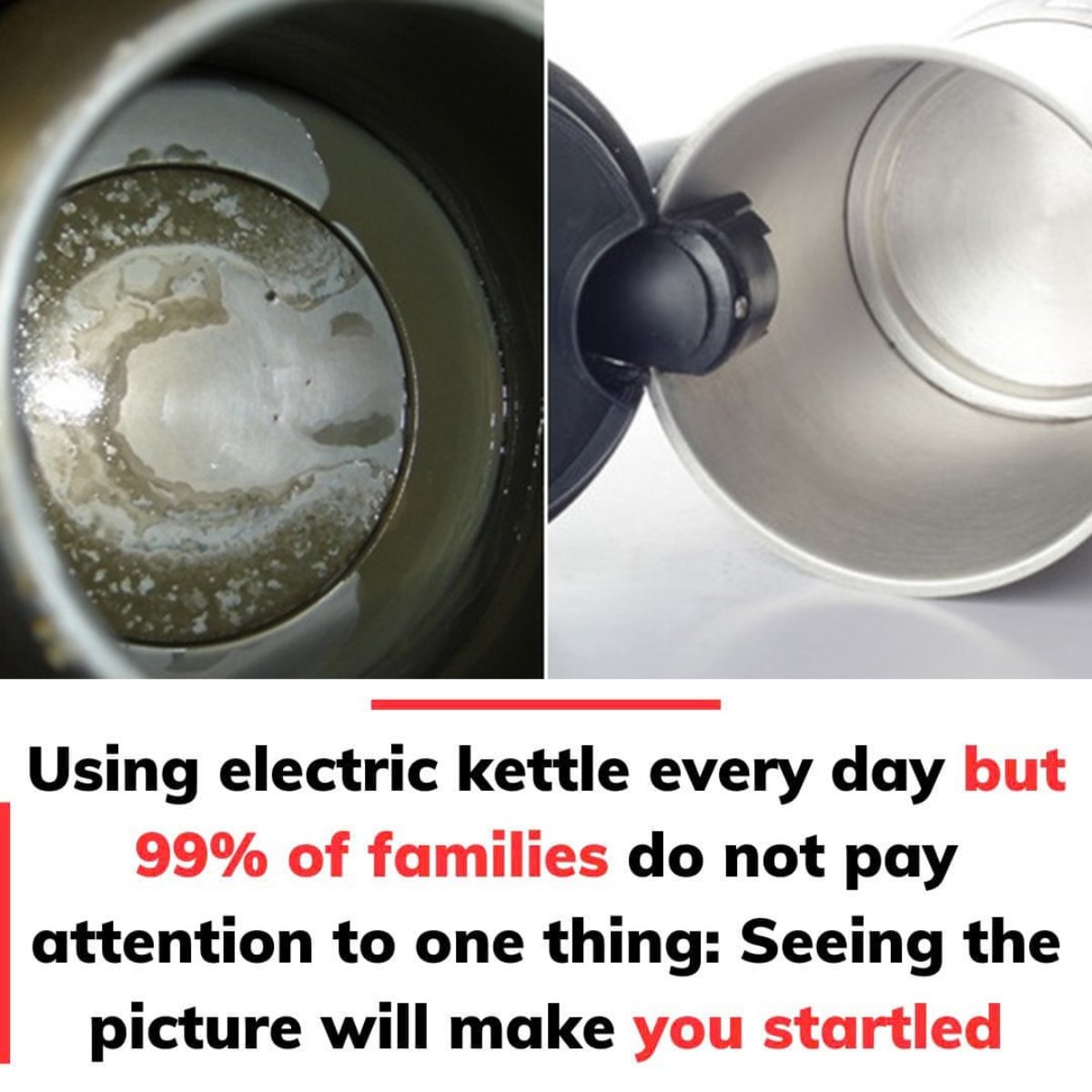Today, nearly every home has at least one electric kettle. It’s the unsung hero of our kitchens—boiling water for tea, coffee, or cooking in just minutes. But there’s one huge problem that most of us overlook when it comes to this everyday appliance. Can you guess what it is?
It’s Cleaning. Or rather, the lack of it.
While we use our electric kettles every single day, how many of us actually think to clean them properly? Recent images shared on a popular household forum shocked many users. The photos revealed the inside of neglected kettles, with white and yellowish deposits caked on the bottom—yuck! At first glance, it’s just an unsightly mess, but experts say these buildups are more than just cosmetic; they could be a health hazard.

What’s Really Going On Inside Your Kettle?
Those unsightly deposits aren’t just dirt; they’re mineral buildup, specifically from calcium and magnesium in the water. Over time, these minerals can form stubborn limescale when exposed to heat, making the kettle look gross and, worse, affecting the water quality.
The problem gets even worse when you realize that boiling water alone doesn’t clean your kettle. While boiling can kill some bacteria, it doesn’t remove the mineral deposits or prevent new bacteria from accumulating. As a result, your kettle becomes a breeding ground for germs and plaque that could affect your health—and your kettle’s performance.
The Hidden Dangers of a Dirty Kettle
Not only does a dirty kettle affect the taste of your water, but it can also lead to energy wastage. Those layers of limescale act as an insulator, forcing the kettle to work harder to heat the water. This means longer boiling times and higher electricity bills! And it doesn’t stop there—over time, the buildup could even damage the heating element, causing the kettle to fail much earlier than it should.
So, How Do You Keep Your Kettle Clean and Safe?
The good news is that keeping your kettle clean is easier than you might think! Here are some simple steps to get rid of limescale and keep your kettle in tip-top shape:
Boil a mixture of water and vinegar: Fill the kettle halfway with equal parts water and white vinegar. Boil the mixture, then let it sit for 15–20 minutes before rinsing.
Use a descaling agent: For more stubborn deposits, use a specialized descaling solution. These products are designed to break down limescale and restore your kettle to its original condition.
Regular cleaning is key: Make it a habit to clean your kettle every couple of weeks or when you notice mineral buildup forming.
Why You Shouldn’t Ignore This
Keeping your kettle clean not only ensures better-tasting water, but it also extends the life of your appliance and improves its efficiency. A clean kettle is a happy kettle—and a happy kettle means better health for your family and lower energy bills.
While electric kettles are a vital part of daily life, they need more care than you might think. Neglecting to clean them could lead to bacteria buildup, poor performance, and even early failure. Take a few minutes today to clean your kettle, and you’ll enjoy fresher water, lower energy costs, and a longer-lasting appliance.

